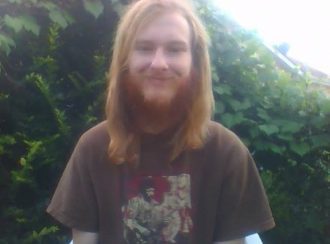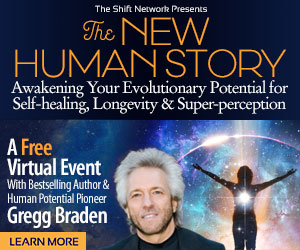By Wes Annac
Guest writer for Wake Up World
An out-of-body experience (OBE) is precisely what the name suggests: an experience where your consciousness is separate from your body, which frees you to roam an open world while the body remains unconscious. It’s a common experience that’s linked to lucid dreaming and sleep paralysis.
Your experience with OBEs, lucid dreams, and similar dream-related phenomena depends on your mindset and the level of control you’re able to exert over your surroundings. Conscious sleep paralysis, on the other hand, is almost always a negative experience.
Sleep Paralysis, Lucid Dreams, and OBEs
Lucid dreaming (and by extension, OBEs) has been praised for providing a vibrant, expansive worldly landscape in which people can work through the problems in their waking life while doing pretty much anything else they want – even fly. Sleep paralysis isn’t as fun.
Despite that the body falls naturally into paralysis when we sleep, retaining consciousness during said paralysis is a scary thing. Sightings of demon-like entities and other dreamlike visions have been reported along with an intense sense of discomfort and confinement. We’ll learn more about that later.
Even lucid dreaming can be a negative thing sometimes, and I recommend practicing it mindfully. Be conscious of whether your techniques lead to where you want to go or to continuous episodes of sleep paralysis.
Since sleep paralysis, lucid dreams and OBEs are so closely related, you might experience one when intending to experience another. When trying to lucid dream, for example, you might end up in a state of conscious sleep paralysis. The same could be said for an OBE, because sleep paralysis precedes it as well. For that reason, you might want to get comfortable with sleep paralysis if you intend to attempt to induce an OBE or lucid dream. It won’t be easy due to the countless reported experiences with “demons” and shadowy entities during sleep paralasis, but waking up in that state seems to be a natural consequence of attempting a lucid dream or OBE.
35 out of 100 People Have Had an OBE
Lynne Levitan and Stephen LaBerge, Ph.D. describe an OBE as an experience wherein someone perceives or thinks they’re perceiving the world from a place outside of the body. 35 out of 100 people have had an OBE at least once, and the experience can be disturbing or “profoundly moving”. (1)
According to Lynne and Stephen, one explanation for OBEs is that consciousness separates from the body and travels throughout the world in another form. Lynne and Stephen believe the out-of-body experience is a natural “mental event” that can happen to regular, healthy people. It could be “a kind of dream”, but most who have an OBE report that it feels realer than a dream. (1) Hallucination has been suggested as a potential explanation, but it wouldn’t explain why so many people’s experiences are so similar. (1)
As Lynne and Stephen write, one sensation which accompanies the OBE is the feeling of having another, more subtle body, which they refer to as the “out of body” body. Other experiences include feeling a sense of energy or vibration, as well as hearing loud noises. In some cases, the sensation of paralysis can precede an OBE. This establishes a link between sleep paralysis and the latter. (1)
OBEs: A Type of Lucid Dream
Rebecca Tuner at World of Lucid Dreaming writes that an OBE is most likely to occur when sleeping, meditating, or practicing exercises that involve wake-induced lucid dreaming. Some people have OBEs frequently, and some can even induce them at will. (2)
Rebecca writes that an OBE can be considered a type of lucid dream. Induction techniques for OBEs are similar to those used for lucid dreams: OBEs and WILDs (wake-induced lucid dreams) both begin when lying in bed, “ideally” after having just woke up. In both cases, the body will reenter sleep paralysis and fall back asleep. The mind, however, will stay awake. This can cause the feeling of being “stuck” in the body with the desire to break free. Most won’t know it, but they’re already dreaming by this point. (2)
Sleep Paralysis Tricks the Body
Rebecca writes that sleep paralysis, combined with continued mental activity, tricks the body into dreaming you’re lying in bed. The room around you will look mostly the same with a few small tweaks, and when you get to this point, you can consider it a lucid dream. You can then leave the body by using your imagination to swing, float, or roll out of it. Despite that you can leave it, your body will feel like lead due to the sleep paralysis. (2)
In this state, she writes, you might see “dream characters” that are commonly perceived as ghosts, angels, or demons. They can help or hurt your effort to break free, and their behavior depends mostly on your expectations and your mental state. You can even “teleport” away from them and into a new dream location by visualizing your desired destination. (2)
Reported Experiences
Now that we’ve learned a little about OBEs, let’s read the stories of people who’ve experienced them. While these are only a few examples, their source — the Out of Body Experience Research Foundation — contains a much larger collection of interesting and unique stories that shed light on all kinds of dream-related phenomena.
First we’ll hear from Don J., who witnessed something strange while practicing chi gong. While his isn’t necessarily an out-of-body experience, it’s similar in that he saw something in his mind’s eye that was more vivid than anything he could’ve imagined or dreamed…
Don’s Story
Don writes that he was seeing a holistic EDMR-licensed therapist for grief counseling, who taught him some chi gong exercises. He was sitting on the floor of his therapist’s office practicing the exercises when he was asked to close his eyes. As he began to close them, he noticed that the color of his therapist’s neck tie became magnified and “very rich”. The image of the brightly colored tie remained in his mind when his eyes were fully shut. (3)
Don reports that he then perceived “blackness” in his mind, which was followed by the appearance of a “lighted doorway” in the distance. He describes it as far more vivid than what the mind can usually imagine. (3)
As his attention was captured by this “vivid white light”, he writes that a black silhouette appeared in the light and formed the image of a young man in a suit. This image, which was also vivid, slowly took on color. The best way he could think to describe it is to liken it to watching TV in your mind. It surprised him enough to stop his exercise and tell his therapist, who also couldn’t explain it. (3)
He writes that he was instructed to close his eyes again, and when he did, the image was still there. It moved closer and became clearer until it “disintegrated” at the point when it was its clearest. He’s certain the image was of a young man, but even when the image was clear, the man’s facial features were unclear. (3)
Ian’s Story
The next and final story is of a powerful OBE/lucid dream that carried over to the physical world.
Ian T. writes that he’d meditated earlier in the day before his experience and, as a normal part of his meditation, sent love and healing to anyone who needed or would need it. He describes the experience that would follow early the next morning as a “very lucid dream/OBE”. He knew what to expect because he’d had them before, but this would be a new experience involving “real physical symptoms”. (4)
Ian writes that he dreamt he was in a harbor area with apartments, shops, and a beach. He met a familiar-seeming young woman who told him a man in the top floor of a nearby apartment was about to pass away and needed help moving peacefully to the other side. She took him to the man, they both informed the man they were with him and everything would be okay, and the man passed gently. (4)
He writes that he then went back outside. As he looked at the sea, he saw that it was “withdrawing” which signaled an impending storm or tsunami. The sky quickly turned dark as the storm progressed. He shouted at people to get to high ground, but as he started running, he felt a heavy weight on his chest and began to have an asthma attack. He fell over, hit the ground, and couldn’t move. (4)
The moment he felt like he was taking his last breath, he writes, he woke up to find he was having real problems breathing. It seemed that the only way to calm the asthma attack in the dream was for him to wake up. He remained awake for five minutes until the attack went away. (4)
He writes that when he fell back asleep, he went right back into the same dream and the same terrifying circumstances he’d tried so desperately to escape. The asthma attack continued in the dream, and he again remained on the ground yelling for help. Fortunately, another young woman stopped and gave him her inhaler. He used it, felt relief, and thanked her. As he got up, he noticed there were a lot of other people on the ground struggling to breathe. He gave them her inhaler. (4)
When he woke up, he writes, he checked the news and found that six people had died and over 8,000 were hospitalized after a thunderstorm in Melbourne, Australia that caused widespread asthmatic reactions. One of those six was a 21-year-old girl who died from an asthma attack induced by the thunderstorm. When reading an article about her death, Ian recognized her as the girl who gave him her inhaler. (4) The news article about her passing can be found here.
This is an interesting example of a lucid dream or OBE having real-world consequences. Not only did Ian’s asthma turn out real; he reports that the girl whose death made headlines before he even woke up was the girl who saved him in the dream. Some will say this is consequential or Ian simply wanted to believe the deceased girl was the girl who saved him, but it’s good anecdotal evidence to support the idea that the dream world is real and connected with the physical.
Conclusion
I’ll share more info on OBEs and lucid dreaming in a future report, but for now, I recommend checking out the reports and experiences submitted to the Out of Body Experience Research Foundation website. If you’re looking for some fascinating reading material on out-of-body-experiences, you won’t be disappointed.
For those attempting to lucid dream or induce an OBE, I’ll repeat my advice from before to be careful and mindful. From what I understand as a lucid dreaming novice, it can either be a powerful tool for transformation or the manifestation of your greatest nightmares. Don’t let one or two bad experiences change the way you see it, but don’t continue if it becomes a negative thing. (You can learn more about lucid dreaming here, including “how to” guides on initiating and maintaining lucid dreams, and using lucid dreaming to overcome nightmares.)
If you practice it consciously, and follow the advice of reputable organizations, websites and guides, a lucid dream or OBE can be a wholesome, fulfilling experience that gives you the freedom to explore your consciousness and the world around you in a unique way.
If you’ve had any interesting experiences with lucid dreaming, sleep paralysis or out-of-body experiences, feel free to share them in the comments below, or join the conversation on Facebook. You might find that someone across the world has had the same experience and is willing to discuss it with you.
Sources:
- Lynne Levitan and Stephen LaBerge, Ph.D., “Other Worlds: Out of Body Experiences and Lucid Dreams”, Lucidity.com – www.lucidity.com/NL32.OBEandLD.html
- Rebecca Turner, “Out of Body Experiences: Are OBEs Real or Lucid Dreams?” World of Lucid Dreaming – www.world-of-lucid-dreaming.com/out-of-body-experiences.html
- Don J., “Don J.’s Experience”, Out of Body Experience Research Foundation – www.oberf.org/don_j_meditation.htm
- Ian T., “Ian T.’s Experience”, Out of Body Experience Research Foundation – www.oberf.org/ian_t_sobe.htm
About the author:

Wes Annac: I’m a twenty-something writer & blogger with an interest in spirituality, revolution, music and the transformative creative force known as love. I run Openhearted Rebel, a daily news blog dedicated to igniting a revolution of love by raising social and spiritual awareness.
I also have a personal blog, Wes Annac’s Personal Blog, in which I share writings related to spiritual philosophy, creativity, heart consciousness and revolution (among other topics).
I write from the heart and try to share informative and enlightening reading material with the rest of the conscious community. When I’m not writing or exploring nature, I’m usually making music.
You can follow Wes Annac at:
- Blog: OpenheartedRebel.com
- Facebook: Facebook.com/Wes.Annac and Facebook.com/OpenheartedRebel
- Twitter: Twitter.com/love_rebellion
Recommended articles by Wes Annac:
- Respect Nature – Don’t Bite The Hand That Feeds
- Love Rebels, Unite!
- Mushroom Magic: The Psychological and Spiritual Benefits of Psilocybin
- Can Cannabis Enhance Our Spirituality?
- 5 Attachments to Release on the Path of Enlightenment
- Stand Up for Cannabis – Stand Up for Freedom!
- You’re the Solution!
- An Introduction to Kundalini
- The Beginning of Something Great
- Cannabis, Consciousness and Common Sense
- Higher Consciousness and the Power of “No-Mind”

If you've ever found value in our articles, we'd greatly appreciate your support by purchasing Mindful Meditation Techniques for Kids - A Practical Guide for Adults to Empower Kids with the Gift of Inner Peace and Resilience for Life.
In the spirit of mindfulness, we encourage you to choose the paperback version. Delve into its pages away from screen glare and notifications, allowing yourself to fully immerse in the transformative practices within. The physical book enriches the learning process and serves as a tangible commitment to mindfulness, easily shared among family and friends.
Over the past few years, Wake Up World has faced significant online censorship, impacting our financial ability to stay online. Instead of soliciting donations, we're exploring win-win solutions with our readers to remain financially viable. Moving into book publishing, we hope to secure ongoing funds to continue our mission. With over 8,500 articles published in the past 13 years, we are committed to keeping our content free and accessible to everyone, without resorting to a paywall.









